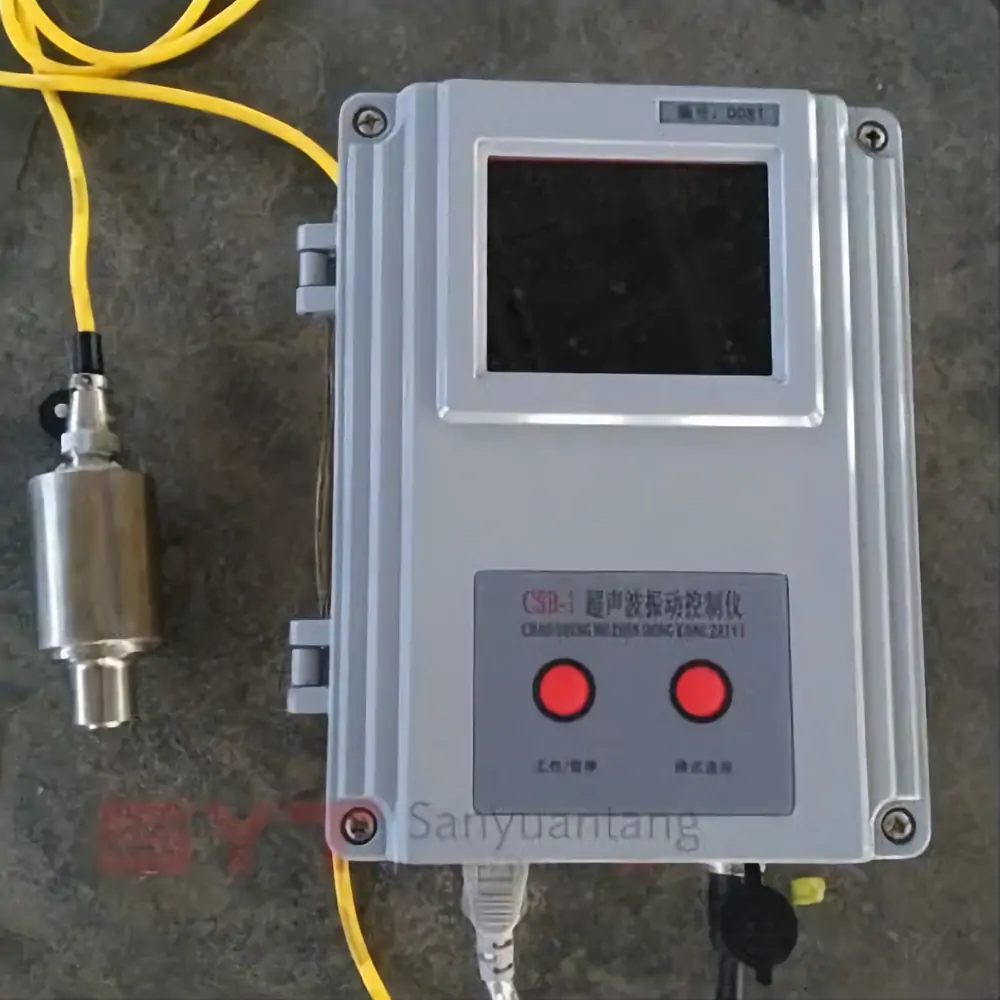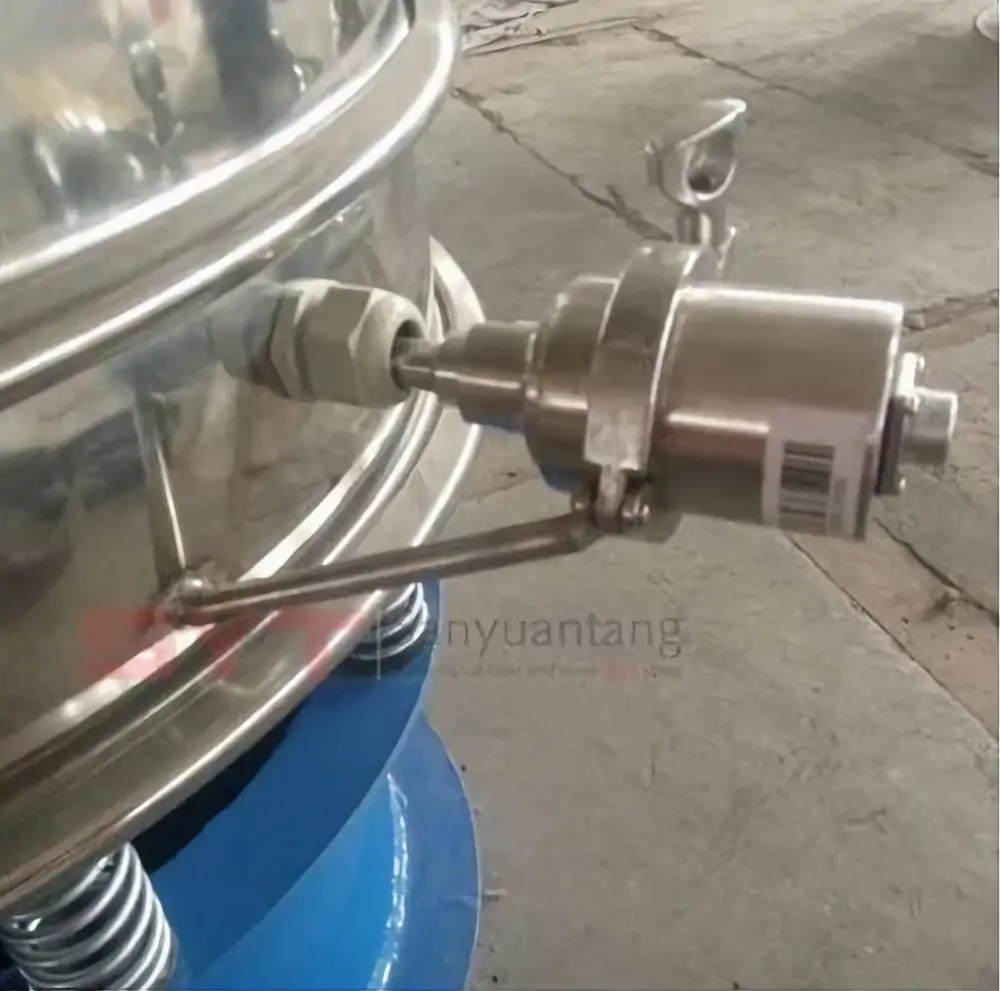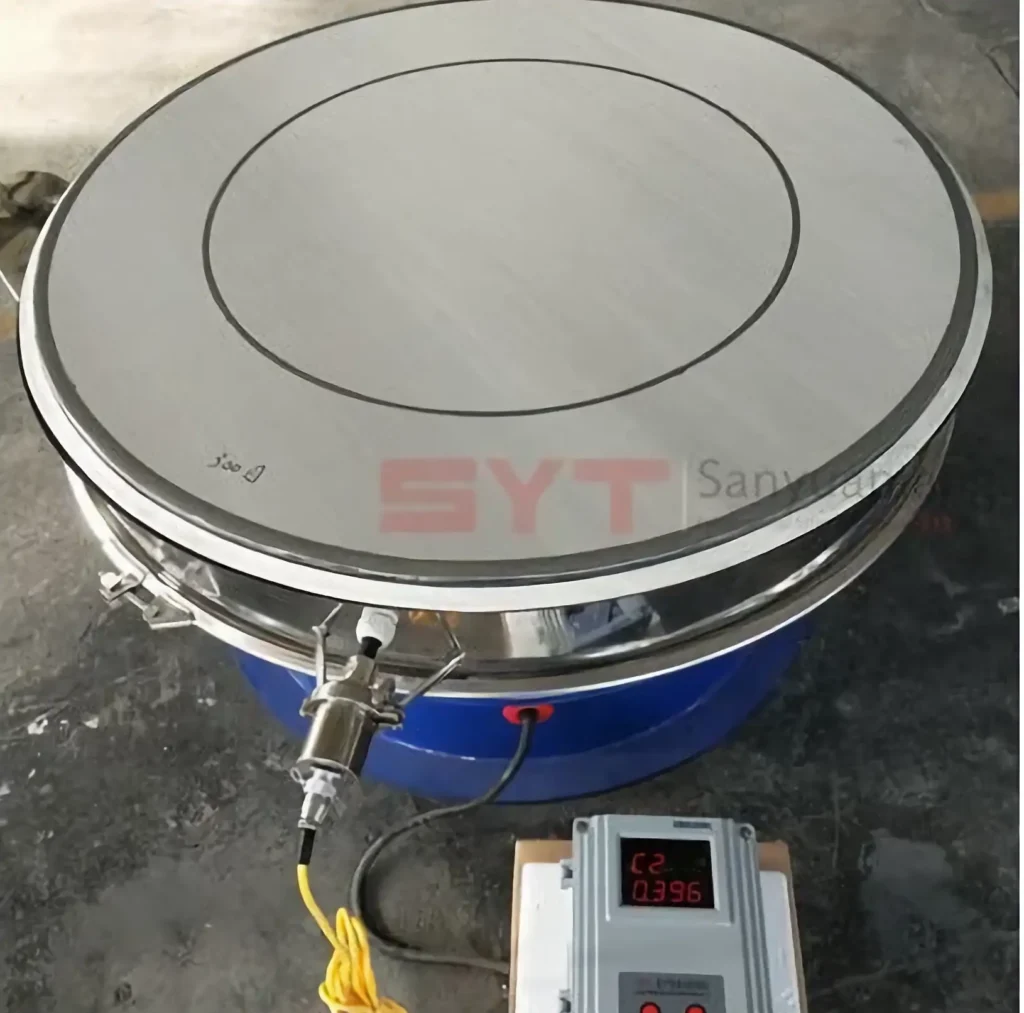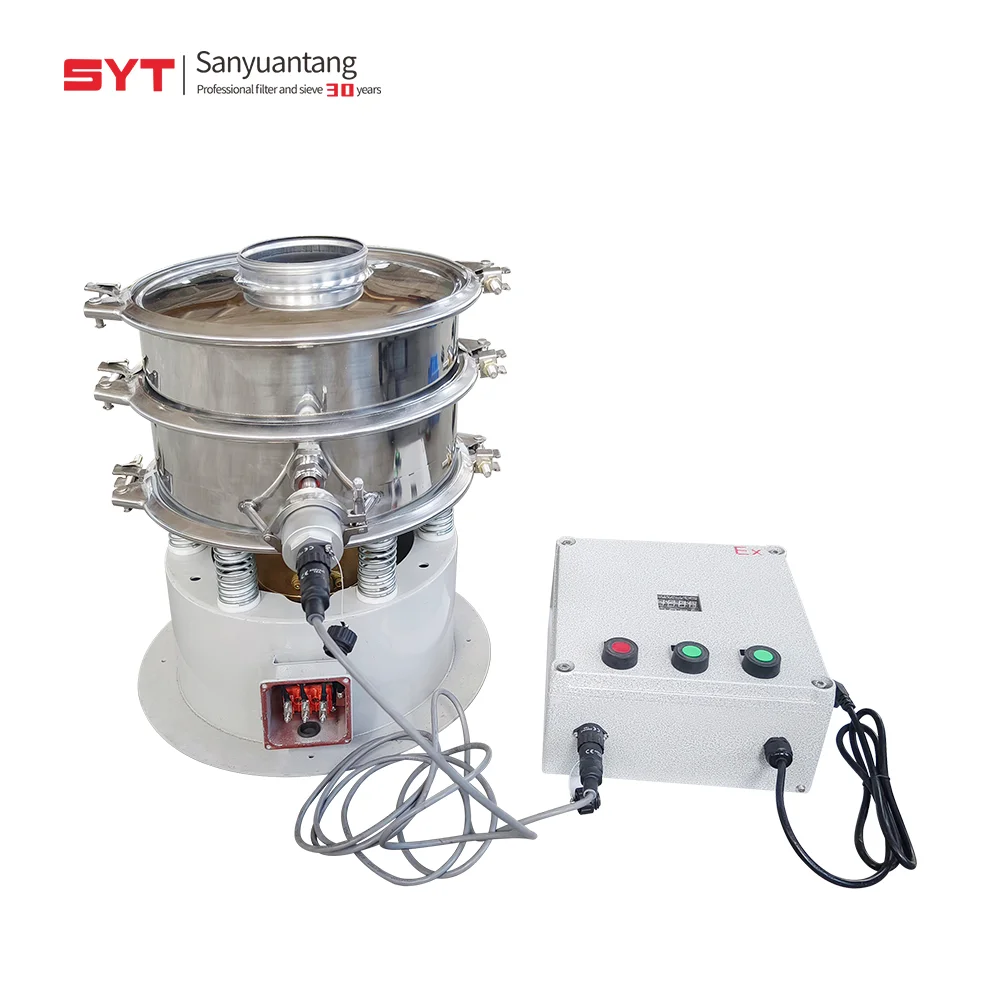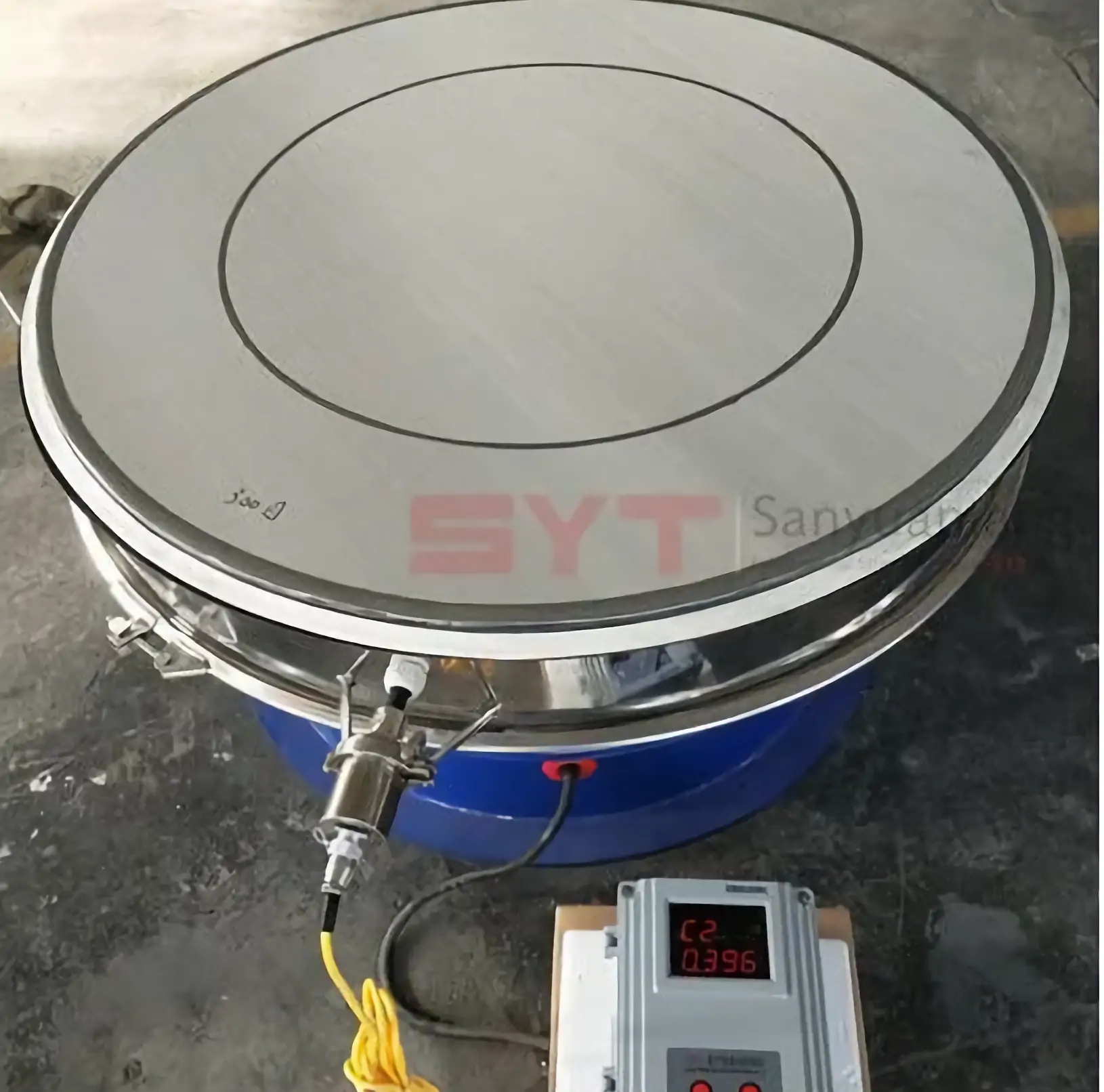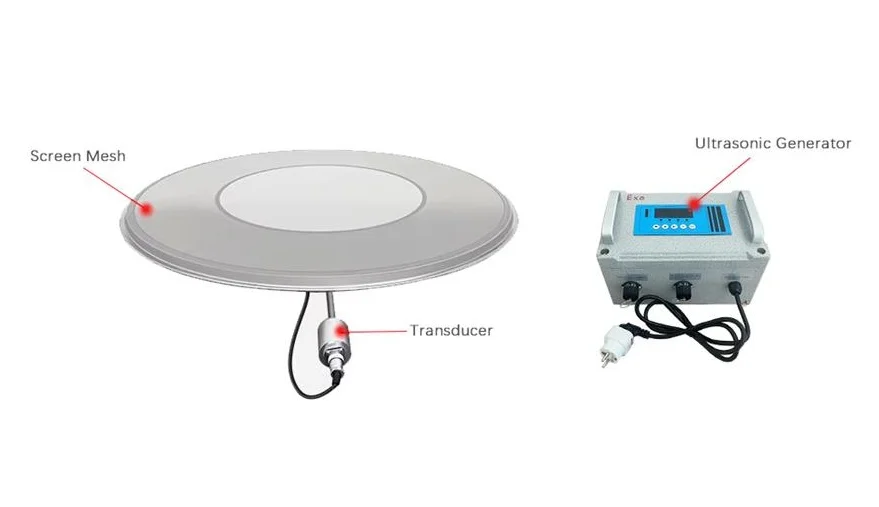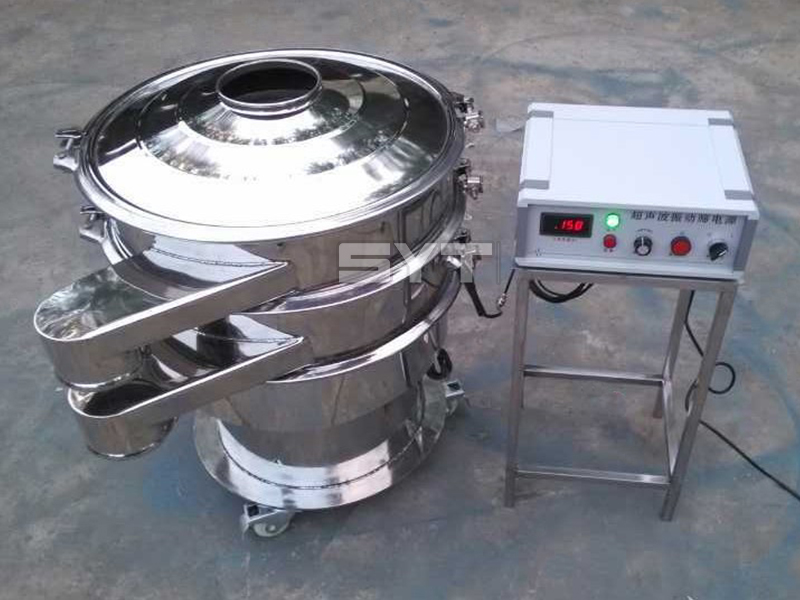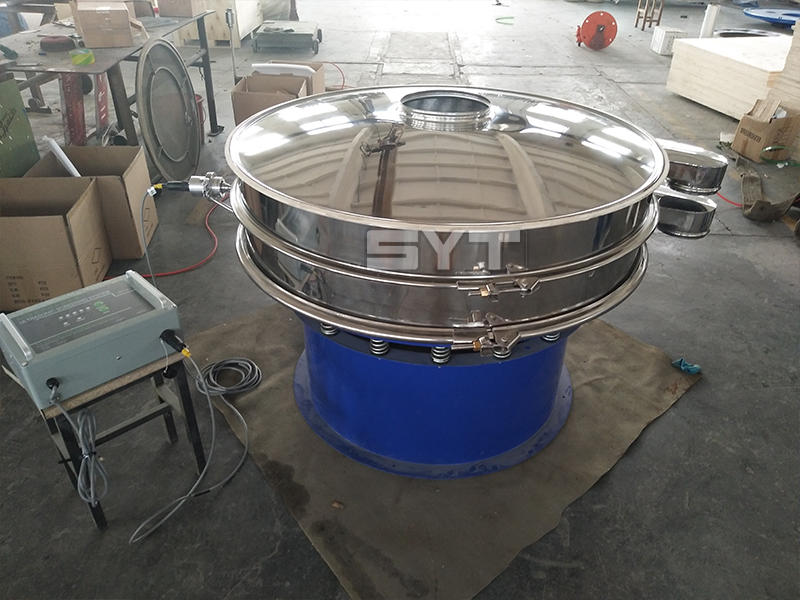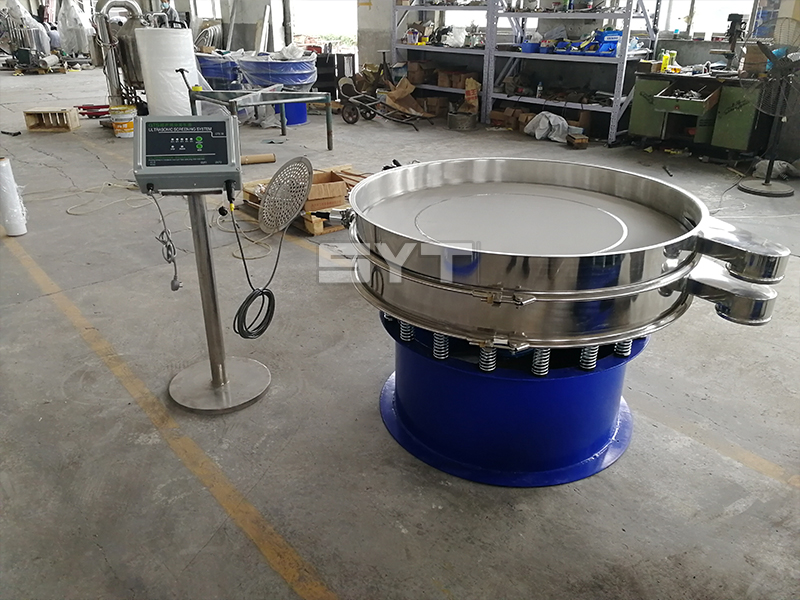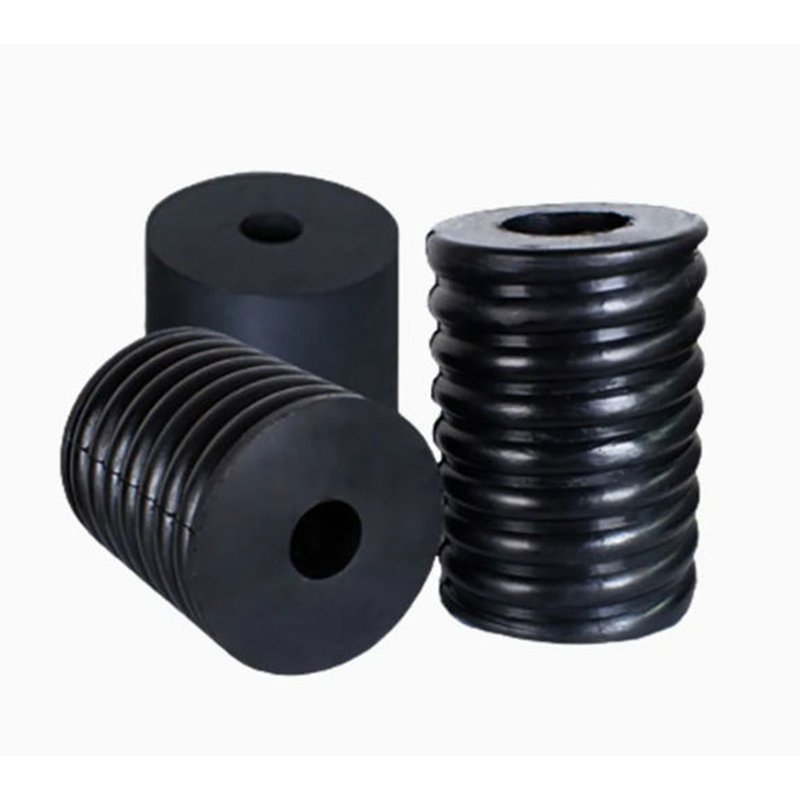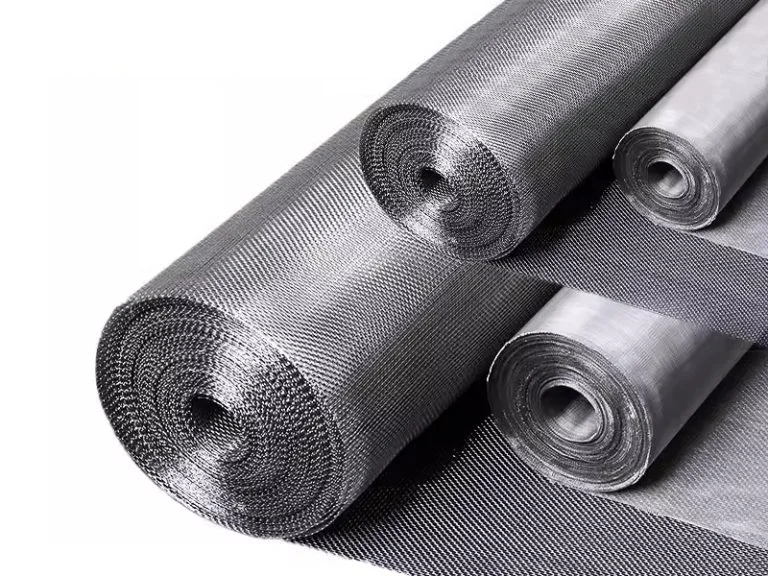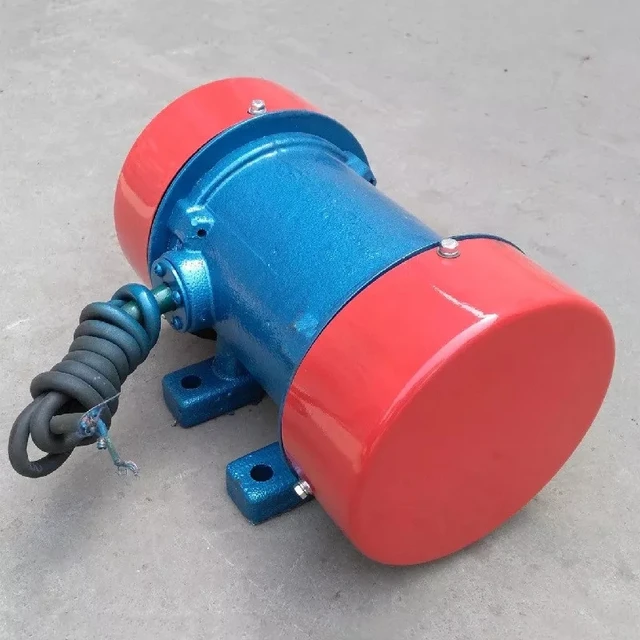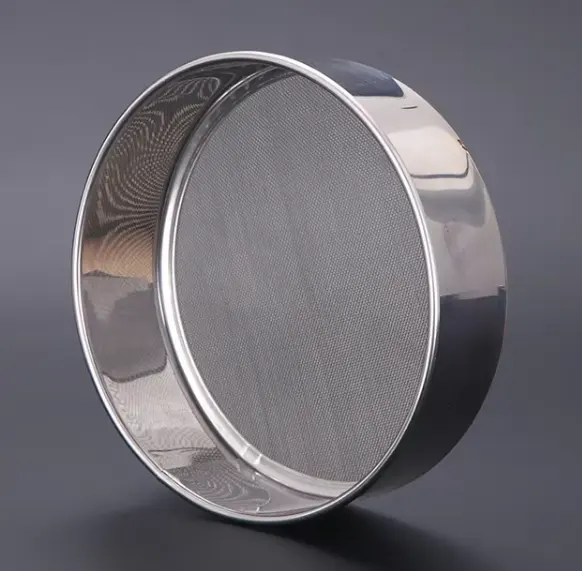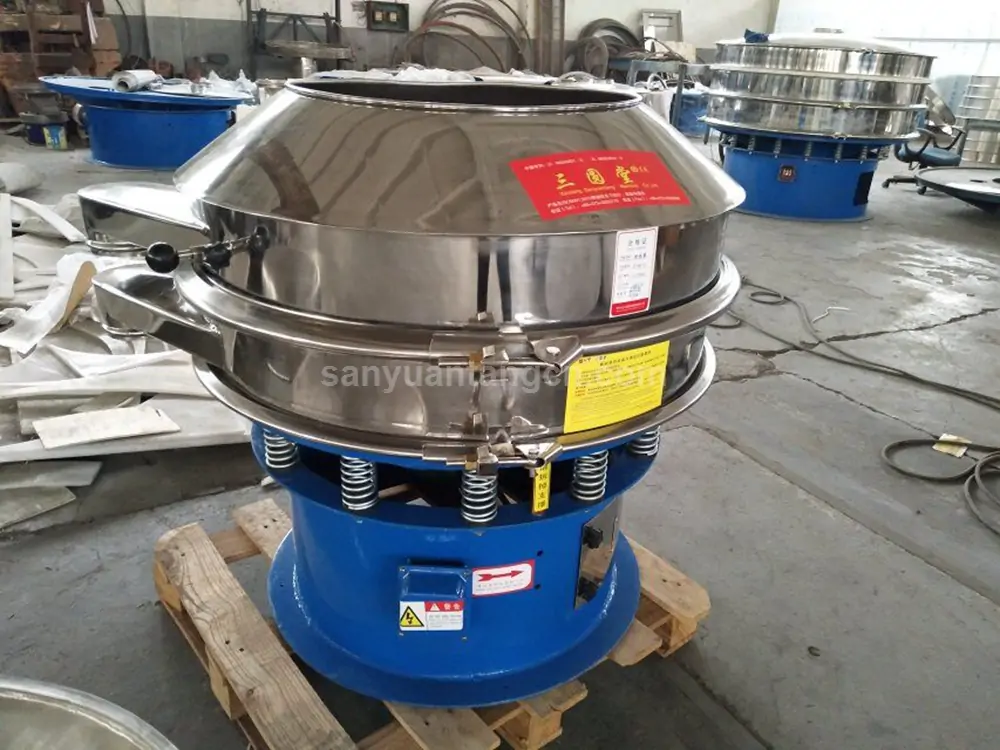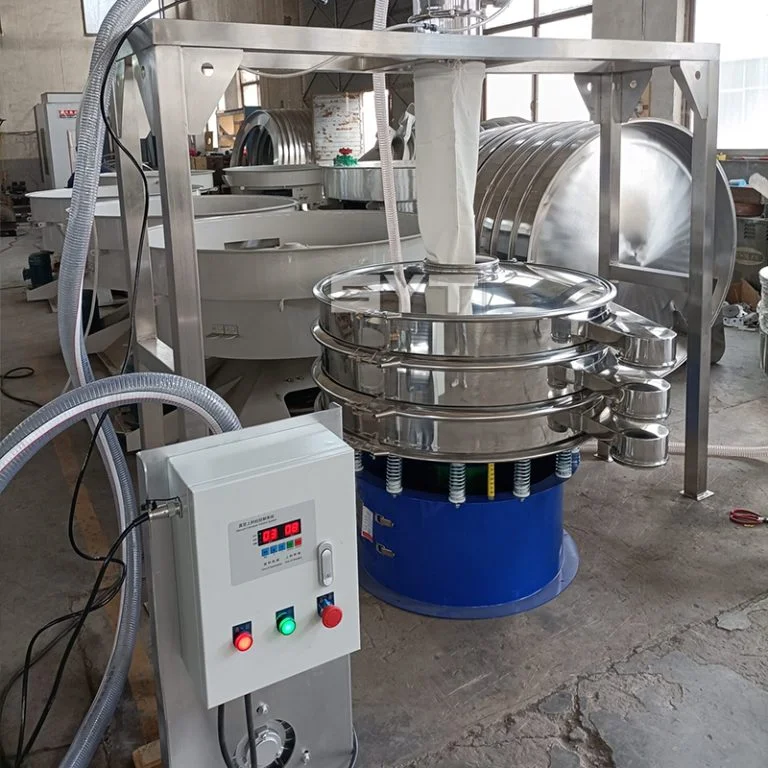Ultrasonic screening system is a set of equipment system that adds ultrasonic technology on the basis of traditional vibrating screen, so as to realize high-precision and high-efficiency sieving. It is mainly composed of ultrasonic power supply, ultrasonic transducer, ultrasonic mesh frame and other components.
We accept your customised production.
- Frequency: 25kHz~60kHz
- Power: 50W~300W
- Amplitude: 1μm~10μm
- Number of transducers: 1~4 transducers
- Screen material: support stainless steel wire mesh, polyester mesh, nylon mesh, etc.
- Applicable vibrating screen: rotary vibrating screen, linear sieve and ultrasonic special sieve machine, etc.
- Customized: Acceptable
Ultrasonic screening system working principle
Ultrasonic screening system working principle, through the ultrasonic power supply output high-frequency electric energy, ultrasonic transducer will convert the electric energy into kinetic energy, so that the vibrating screen produces high-frequency mechanical vibration, this vibration in the form of ultrasonic wave through the ultrasonic mesh frame transfer to the screen surface.
On the basis of the mechanical vibration of the traditional vibrating screen, ultrasonic vibration is superimposed, so that the screen produces high-frequency micro-amplitude vibration. When the material moves on the screen surface, it is not only subject to the throwing force of the traditional vibrating screen, but also subject to the high-frequency impact force generated by the ultrasonic wave.
For ordinary materials, the high-frequency vibration of ultrasonic waves can make the materials more quickly dispersed, for materials with adsorption, easy to agglomerate, such as some ultra-fine powders, ultrasonic high-frequency impact can destroy the agglomeration structure of the material, so that the fine particles can pass through the sieve holes smoothly, to achieve high efficiency screening.
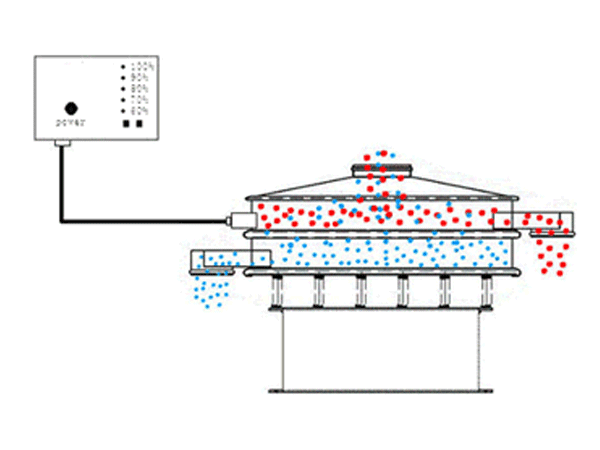
Ultrasonic Screening System accessories and role
- Ultrasonic power supply: 50/60Hz ordinary electrical energy into high-frequency electrical signals (usually 18kHz-40kHz), to provide a stable energy input for the system.
- Ultrasonic transducer: ultrasonic power output of high-frequency electrical signals into high-frequency mechanical vibration.
- Ultrasonic mesh frame: the part that installs and fixes the transducer, and at the same time serves as the medium for ultrasonic waves to be transmitted to the screen mesh; it directly affects the uniformity of ultrasonic wave distribution and screening effect.
- Resonance ring: the mechanical vibration generated by the transducer is evenly transmitted to the entire screen surface.
- Vibrating screen mesh: adopts high fatigue-resistant material, which can withstand high-frequency micro-vibration but not easy to be deformed or damaged, so as to improve the screening effect of small particles.
5 Advantages of Ultrasonic Screening System
High screening precision: it can deal with micron-level materials of 20μm~300μm (such as electronic ceramic powder and pharmaceutical powder), and can realize the fine classification that is difficult to be achieved by the traditional vibrating screen.
Improvement of screening efficiency: ultrasonic high-frequency vibration can continuously remove the mesh blockage, reduce the material adhesion, the rate of mesh penetration is greatly improved, and the screening capacity per unit time is improved.
Wide adaptability of materials: effectively solve the problem of high viscosity (such as resin), easy to agglomerate (such as graphene), electrostatic adsorption (metal powder), etc., but also can screen paste materials with high water content.
Energy-saving and durable: ultrasonic component power consumption of 50W~300W, much lower than mechanical screen cleaning device; screen high-frequency micro-vibration to reduce wear and tear, which can enhance the service life of screening equipment.
Intelligent cleaning: automatic cleaning of the screen mesh, reducing the frequency of manual cleaning, modular structure can be quickly overhauled, some models support real-time frequency adjustment.
 All stainless steel
All stainless steel All stainless steel
All stainless steel Standard stype
Standard stype Add scraper
Add scraper Add scraper
Add scraper Ultrasonic controller with bracket
Ultrasonic controller with bracket Screen
Screen Mini stype
Mini stype
specifications
| Model | Power(kW) | Effective diameter for sieve surface | Packing Size(MM) | Layer |
|---|---|---|---|---|
| SYC-600- 1S | 0.25 | Φ600 mm | 800×800×680 | 1-5 |
| SYC-800- 1S | 0.55 | Φ800mm | 900×900×780 | 1-5 |
| SYC-1000- 1S | 0.75 | Φ970mm | 1160×1160×880 | 1-5 |
| SYC-1200- 1S | 1.1 | Φ1170mm | 1360×1360×980 | 1-5 |
| SYC-1500- 1S | 1.5 | Φ1470mm | 1850×1850×1130 | 1-5 |
| SYC-1800-1S | 2.2 | Φ1770mm | 2200×2200×1360 | 1-5 |
Common Fault Codes in Use
- E-02: Motor malfunction
- E-03: Overheating fault
- E-04: Temperature detection open circuit
- E-05: Frequency matching abnormality
Custom Ultrasonic Screening System
To provide the Screening System for your vibrating screen, please provide the following customised parameters:
- Material characteristics: e.g. particle size range, moisture content, viscosity, electrostatic properties, temperature, etc.
- Screening requirements: the target screen mesh or micron number, whether the need for multi-stage classification
- Capacity requirements: hourly or shift-by-shift screening throughput requirements
- Existing screen machine parameters: screen machine type, diameter, number of layers, power, etc.
- Working environment: power supply voltage, explosion-proof grade, temperature and humidity, corrosiveness, etc.
- Special requirements: such as customized frequency, anti-blocking requirements, automation control, etc.
